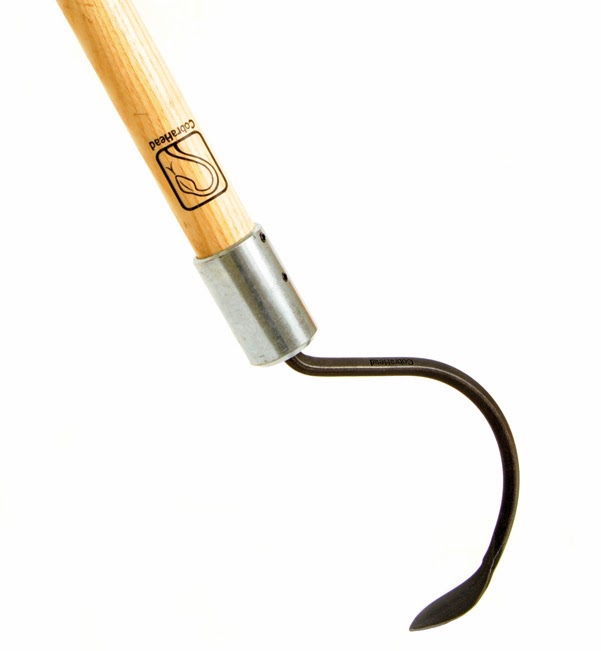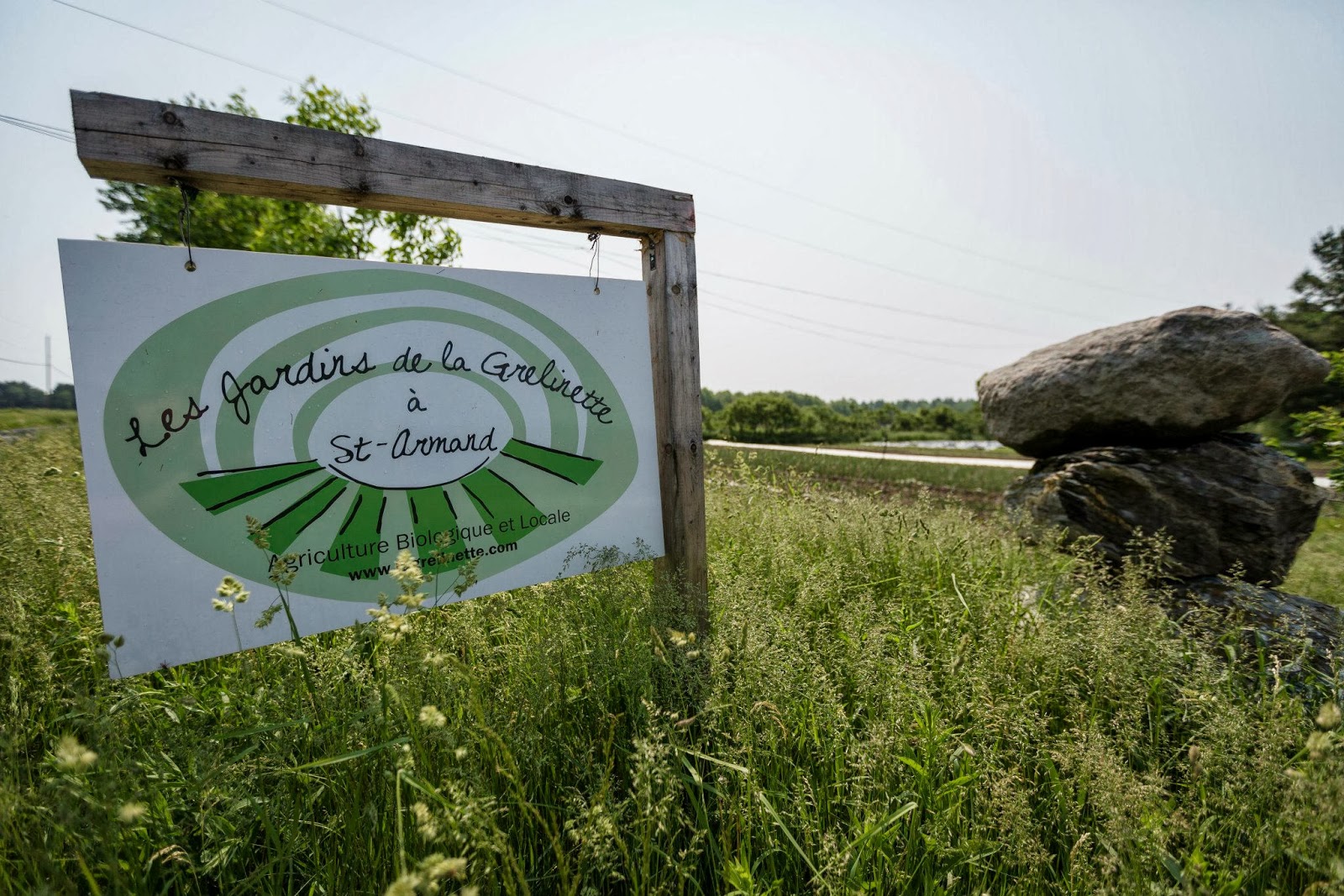Long-handled Tools
The Stirrup Hoe
 |
| Mark Guzzi hoes a row at Peacemeal Farm in Dixmont, ME. Photo courtesy, Eric Gallandt, University of Maine. |
The Collinear Hoe
Also, one of our all-time most popular hoes, the Collinear Hoe is very unique. Eliot Coleman designed it with a sharp, rectangular blade that lays flat against (or collinear) with the ground. It is a type of 'draw hoe' because it is pulled toward the user. Doing so, slices weeds off just below the soil surface, leaving them to whither and die in the sun. It is very versatile and especially effective in and around low lying foliage on crops like head lettuce. It is also designed with ergonomics at its very inception. The idea was to create a hoe that could be used in a vertical stance, to reduce lower back strain. The collinear hoe is therefore used with a thumbs-up grip, much as you would a kitchen broom. It can be used in a back and forth motion in lighter weed pressure or more aggressively as a draw hoe on more mature weeds. There are three versions of this tool - 3-3/4" and 7" fixed blade models and a 7" model with a replaceable blade.
 |
| This series of photos courtesy Jean-Martin Fortier, Les Jardins de le Grelinette, St. Armand, Quebec. |
The Wire Weeder
This is a highly ergonomic weeder designed by Eliot Coleman, with surgical precision in its application. Like the Collinear Hoes, it is designed to be used with a straight back and both thumbs up. It is great for emerging weeds, especially in and around younger crops or closely-spaced crops, where clumsiness just will not do. It is somewhat blunt, so it is designed not to cut through the weeds, but to overturn them, exposing their roots to the sun. There is also a short-handled version of this tool. |
| Back & forth operation. |
 |
| Simply dragging the weeder through the soil. |
The Trapezoid Hoe
This is our favorite for mid-sized weeds. It is a traditional chopping hoe with a unique trapezoidal shape. The beveled blade is angled just enough to get under the edges of plants. Sharp corners tackle stubborn roots. The replaceable spring steel blade allows easy renewal after multiple seasons of vigorous use.
The Cobrahead Long-handled Weeder/Cultivator
The 3-Tooth Cultivator
This tool was designed by Eliot Coleman to have a push-pull action for incorporating compost and fertilizer, and loosening soil. What's that got to do with weeding? Well, it can also be used for cultivating between rows in footpaths and is especially effective on emerging weed seedlings in those areas as the cultivating action of its teeth act to bury those young plants, smothering them.
 |
| A vigorous back & forth motion is used to cultivate. |
Short-handled Tools
The Hand Hoe
The Lucko Wire Weeder
This tool was recommended to us by Paul and Alison Wiediger of Au Naturel Farm in Kentucky. The Wiedigers prefer this European-made tool for detailed weeding in their hoophouses. The round wire design creates a business end of the tool that won't cut drip tape but will easily upend young weed seedlings. It has a narrow end for weeding between closely spaced crops like dense plantings of baby leaf lettuce and a wider end to cover more ground in open areas.
The Wire Weeder
The short-handled version of one of Eliot Coleman's favorite tools, it is perfect for in-row weeding of closely spaced crops like salad mix, carrots and onions, as well as perennial flowers and herbs.The Spring Tine Cultivator
Three round, spring-steel tines with a wooden handle. This light-weight tool feels great when cultivating tight areas. It's spring tines scratch the soil just enough to uproot smaller weeds while loosening the surface soil, allowing water and oxygen to penetrate.
The Ho-Mi EZ Digger

The Cobrahead Weeder & Cultivator
The short handled version of the Cobrahead described above. The tough, sharp steel blade and comfortable handle make fast work of tedious garden chores. Used to weed, cultivate, make small furrows, and even as a mini trowel for small transplants.Thermal Weed Control:
Flame weeding is also a very effective method of organic weed control. There are two main methods...Spot Flame Weeding
Spot flaming is done most often at the ends of rows, and in the footpaths to control weeds after a crop is established. It is not necessary to char or burn the weeds. The flame need only overheat the tissues of the plants and break the cell tissues to be effective (visually, the plants will wilt).
Pre-emergence Weed Control
Other general notes about mechanical weeding:
Weeding is most effectively done when the weeds are young and in the morning on a sunny day. Together, those two tactics will result in the highest mortality rate, reducing subsequent weeding. Young weeds are simply easier to kill and all weeds are easier to kill when the afternoon sun is available to dessicate their disturbed foliage and roots.
Also, although there seems to be an unending supply, there really are just so many weed seeds available in the 'weed seed bank' - that collection of weed seeds lying dormant in your soil, awaiting favorable conditions to germinate and cause you problems. Weeding while the weeds are young and have not gone to seed, works to effectively deplete the weed seed bank and eventually will result in relatively weed-free conditions. But, you have to be diligent and proactive in order to ever achieve that.
Thanks for reading and best of luck in your own personal battle against weeds.
Adam.
Adam Lemieux
Tools & Supplies Manager














































